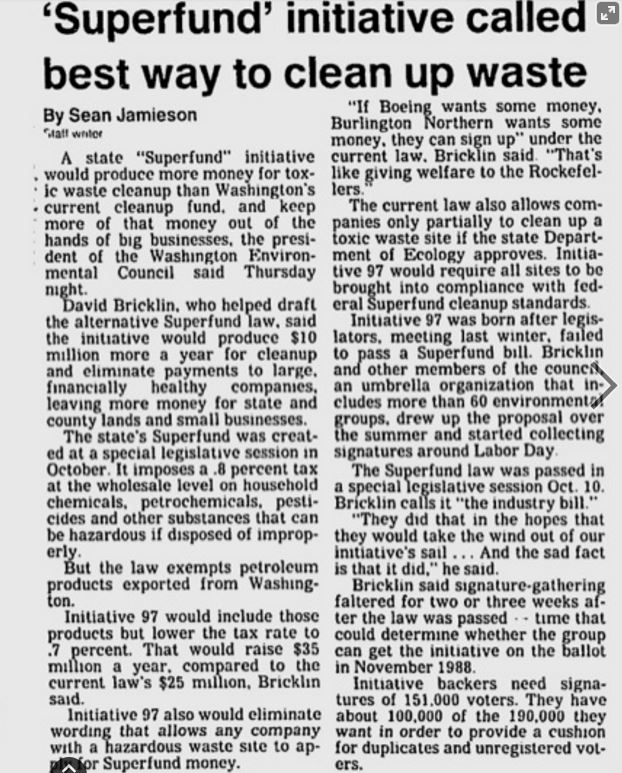 More than half of Washington State residents live within about a 10-minutes walk of a site that is polluted with dangerous substances. These sites may be gas stations, shuttered mines, or factories; their soils, sediments or groundwater may be contaminated with contaminants like gasoline, metals, or PCBs (polychlorinated biphenyls).
More than half of Washington State residents live within about a 10-minutes walk of a site that is polluted with dangerous substances. These sites may be gas stations, shuttered mines, or factories; their soils, sediments or groundwater may be contaminated with contaminants like gasoline, metals, or PCBs (polychlorinated biphenyls).
These sites, known as contaminated sites, are being cleaned up as a result of a citizen-initiative passed by Washington State voters in 1988. Dubbed the Model Toxics Control Act (MTCA), this legislation now helps ensure that contaminated sites within Washington are identified, investigated, and cleaned up.
MCTA has now been in effect for more than 25 years. Clean-up has been completed on more than 6,000 sites, or over half of the 11,000-plus sites identified. Every year, more contaminated sites are identified, which is the first step in achieving their cleanup.
In 2013, toxicology students Jenna Dohman and Dylan Peterson partnered with environmental journalism students James Rogers and Timothy Seguin. They traveled around the state to understand how this law came into being and what it meant for a state littered with toxic legacies from pulp and paper mills along the Puget Sound, to apple orchards in the Yakima Valley and heavy metals mines in the remote mountains.
